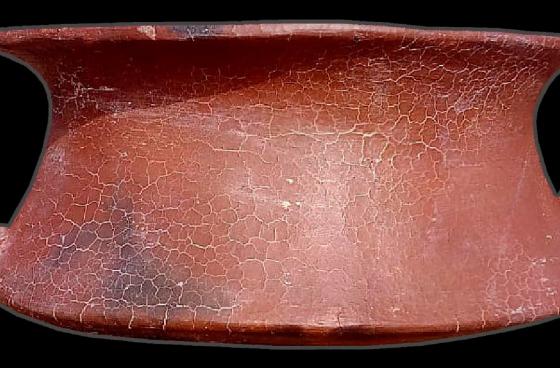The 15th Experimental Archeology Course is celebrated this year 2019 between September 13 and 17. The place is the Student Residence "Florencio Repollés", located in C / Sástago s / n, in the Bajoaragonesa town of Caspe (Zaragoza, Spain).
As it has been developed in previous editions, the structure of the Course is organized around thematic units developed and conducted by the different speakers over a day, with an approximate duration of 8 teaching hours per day.
Each one of the topics is introduced in its theoretical aspects or which ones you want to highlight at the beginning of each morning and / or afternoon session for a maximum time of 2 hours. From there, during the rest of the day and following the philosophy that has characterized the course since its inception, fully participatory practical activities aimed at students acquire and develop skills and experiences are carried out.
As it has happened in the last three editions, the Course is also open to the educational centers of Caspe, with the desire to raise awareness and bring young and young to the world of prehistory. To this end, the Course has designed a demonstration package outside its official program, specifically prepared for these groups of students, who must be accompanied by their teachers.
The course is recognized with credits of Complementary Academic Activities in the Degree of History of the University of Zaragoza.
The course is directed by Carlos Mazo. Speakers are: Javier Fanlo, Anna Homs, Carlos Mazo & Aquilino Rodríguez.
It is not the first time that in the Course of Experimental Archeology of Caspe we approach the subject of the ceramic productions by hand (until now always of the hand and the enormous knowledge of Javier Fanlo). Nor is it the first time that we decided to deal with some type of ceramic production in particular (as it happened with the Greek ceramics, villanoviana and Etruscan, with our admired Cesare Calandrini). On this occasion we are going to introduce ourselves to the production of pottery by pre-Hispanic Canarian hand, with Aquilino Rodríguez Santana.
The modeling technique used by the first inhabitants of the archipelago, by hand, without a winch, is to raise the wall of the vessel with successive cords of mud (churros or buns) on a flat and circular background. This technique, known as "warping", has been a feminine domestic task until the 20th century, which has been transmitted from mothers to daughters. This way of modeling a vessel will not be unknown to some of those who have already participated in our course. But it is not about knowing the techniques of elaboration of Canarian aboriginal pottery reproducing it with commercial clays (that would place us quite far from reality), because one of the particularities of this pottery lies precisely in its pastes. Primary, volcanic mud, with great power of water absorption, an enormous plasticity and capacity of contraction when drying and a low temperature of maturity in cooking (which determines the porosity and fragility of these ceramics).
That generates both disadvantages and advantages. The disadvantages, always if you do not know how to treat those muds, would be, on the one hand, the deformation in the cooking (or rather, "stew", because we already have to get used to their own terms) due to the scarce fork that there is between the temperature of the optimal degree of cooking and the melting temperature. On the other, excessive contraction and, therefore, cracking. Among the advantages, that these muds admit (in fact it is necessary to reduce their plasticity) large amount of degreaser ("sand of ravine", free of salinity), that positively influences the drying and cooking process, and its high capacity to withstand a thermal shock.
Program
Friday, September 13
9:30-11:30
Presentation: Geographical framework and historical context. History of the "warped" ceramic technique in the Canary Islands. Geology and origin of materials.
Demonstration: Invoice of a piece by creating it.
12 00-14:00
Practice: Preparation of the clay.
Realization from a ball of a piece of microceramic to familiarize with the material (volcanic clay of Lanzarote).
Realization with the technique of warping a ceramic piece of medium size.
16:30-18:00
Lecture: Appendices in Neolithic ceramics of the Canary Islands: typologies and evolution.
18:00-20:30
Continuation of the manufacturing process: Trimming, scraping, application of appendices and smoothing.
Saturday, September 14
9:00-11:00
Lecture: Decoration techniques: Incised, printed, ribbed and excised.
11: 30-13:00
Ceramic decoration practice
16:00 - 17:30
Presentation: The colors, engobes, brushes and painted decorative motifs.
17:30 - 20:00
Demonstration and practice: Manufacture of colors and brushes.
Ceramic decoration with colors.
Tuesday, September 17
9:00-13:00
Lecture: The basics of open-air cooking of Canarian aboriginal pottery.
Cooking ceramic production carried out in the course.
Teaching centers
The teaching centers will be able to attend the demonstrations that the Course specifically organizes for them on September 13, 16 and 17. Each visit will last 50 minutes and will take place between 10 am and 1 pm.
The centers that wish to attend these demonstrations will have to make their manifestation of interest previously, making it reach the CECBAC.
